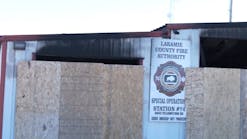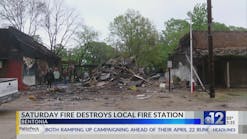For fire prevention programs to be efficient and productive they need to be targeted to the appropriate audience, and the department needs to be offensive in its approach in reaching them. As I have said a thousand times before the people who most need to hear your messages are probably not the ones who will be walking into your station, calling for a program, or live in school districts that can afford field trips. You need to go out and get them.
Summer time presents a great opportunity for any department to set up a productive year for fire prevention programs. It gives you the opportunity to plan an offensive attack and deploy your resources effectively to ensure victory. If you want to reduce fires, if you want to have a true prevention program, then you need to have a plan and the summer is the time to do it.
The three steps of fire prevention planning are:
- First - What is your fire problem?
- Second - Where are they occurring?
- Third - What resources are in the area(s) that can be utilized to establish your beach head to start your invasion?
Next gather the statistics you need to support your research and decide what can be done to prevent the problem from occurring and if it occurs what can be done to minimize damages? For example:
If cooking fires are your number one cause of fire (probably is) what can be done to prevent them (education programs)? But should they occur, what can be done to minimize damages (fire extinguishers), and what specific statistics will support this claim (85 percent of all cooking fires we do respond to occur at dinner time and residents do not have fire extinguishers).
You now have the outline for your campaign. Talking with kids in East Smithville about stop-drop-roll when your fires are occurring in West Smithville is not an efficient use of resources for fire prevention. It may make your numbers look good and help you feel good, but isn't going to do anything to reduce your fire problem. Spending $1,000 on plastic fire hats when you could have purchased fire extinguishers for your problem neighborhood is not a wise investment. These are a waste of resources!
So now what? Plan your offensive!
Take a look at your schedule for the upcoming year. Divide the targeted area(s) up into manageable sections and take a look at the programs you want to present. Again, as in the example of the cooking fires, you may want to implement several programs; fire extinguisher training and then home fire safety inspections. Instead of tackling all of West Smithville in one month, which may cause burnout and affect your delivery effectiveness, divide West Smithville into blocks (Jones Street to Forest Ave) and set your schedule. Think in dimensions; children, adults, senior citizens, and people who work or have contact with each.
Now starting outlining your attack!
Every neighborhood has an elementary school. This could be a good place to get flyers home to the parents, maybe even use the children to do the home fire safety inspections as part of a class contest. Do they have parent nights which will assist you in program delivery, or do they have an active parent-teacher associatoin? Who are your points's of contact in the school that can help? Here in South Carolina physical education teachers are our connections because they are required to teach health and safety and fire safety is a category within that. Set up a meeting with your contacts and get face to face to discuss your plan.
Are there any colleges in this community for an adult audience? Do they have a neighborhood association or a neighborhood watch group that can provide an audience or help you set things up? Talk to your local law enforcement because many times they will have these answers or know who the community leaders are.
How about assistance? What would get the community out to listen to you?
Stakeholders! Check with local churches. Many times they have community outreach programs that you can partner with - they also believe in a kind of fire prevention, they save souls and we save homes. Here in Beaufort we were able to effectively get into our target neighborhoods with such a church group. They provided the food, the grills, and a stereo sound system, we provided the fire safety. They preached their version of fire prevention (hell and brimstone) and we preached ours.
How about law enforcement? Every year police departments conduct a community night out and this type of activity is regular to them. They also have a vested interest in such a program because I am willing to bet your target neighborhoods for fire are their same target neighborhoods for crime. Check with your health department and social services because again, their customers are probably the same as ours and would be great partners to assist.
Free stuff! People will turn out for free stuff. Talk with places like Lowes or Home Depot to donate some fire extinguishers. They have programs designed for community support and may even take it a step further by providing other items to make your program more dynamic. Talk with places like K-Mart or Wal-Mart to donate gift cards or food for a community outing.
One approach maybe that everyone who demonstrates the proper use of a fire extinguisher gets an extinguisher for free, then a week later if they agree to a home fire safety inspection and their extinguisher is mounted, they get a gift card. Bring it all together.
Use this summer to develop your program and plan your attack to ensure your efforts and resources are delivered on target. Find out who your community contacts are and use this time to make a liaison with them and get them on your team. Involve the media and think outside the box. If your cooking fires are occurring at dinner time, see about doing a publice service announcement before or during the evening news (dinner time).
Quality fire prevention means being on the offensive, acquiring your targets and going after them with a well thought out plan; because the ones who need you probably will not be the ones who seek you - but they are counting on you all the same.
See Daniel Byrne Live! Daniel will be presenting "It Takes More than Plastic Fire Hats! Taking Public Education to Another Level" at Firehouse Expo on July 23 in Baltimore. Later that day he will be a panelist on the Radio@Firehouse podcast looking at fire and life safety programs.
DANIEL BYRNE, a Firehouse.com Contributing Editor, is a lieutenant, EMT-P, with the City of Beaufort, SC, Fire Department and currently serves in the capacity of fire marshal, public education officer and public information officer for the City of Beaufort and Town of Port Royal. A 20-year veteran of the emergency services, he holds both an associate and bachelors degree in fire science, is a National Fire Academy Alumni, and a veteran of the Desert Shield/Storm war with the U.S. Marine Corps. The City of Beaufort Fire Department has twice been awarded the South Carolina "Richard S. Campbell Award" for excellence in public fire safety education. He was a panelist on the Developing and Adapting Successful Fire Prevention Applications podcast on [email protected]. You can reach Daniel by e-mail at [email protected].

Daniel Byrne
DANIEL BYRNE is a community support officer for the Burton Fire District, Beaufort County, SC, and a retired assistant fire chief of training for the Georgia Air National Guard 165th Fire Department. A third-generation firefighter, he holds an associate degree and a bachelor’s degree in fire science as well as a master’s degree in public administration and disaster management. Byrne is an alumnus of the National Fire Academy. He received state and local awards for public relations and educational programs as well as community partnerships and served as a conference presenter and keynote speaker.





